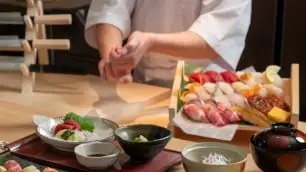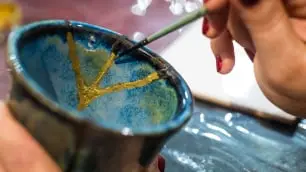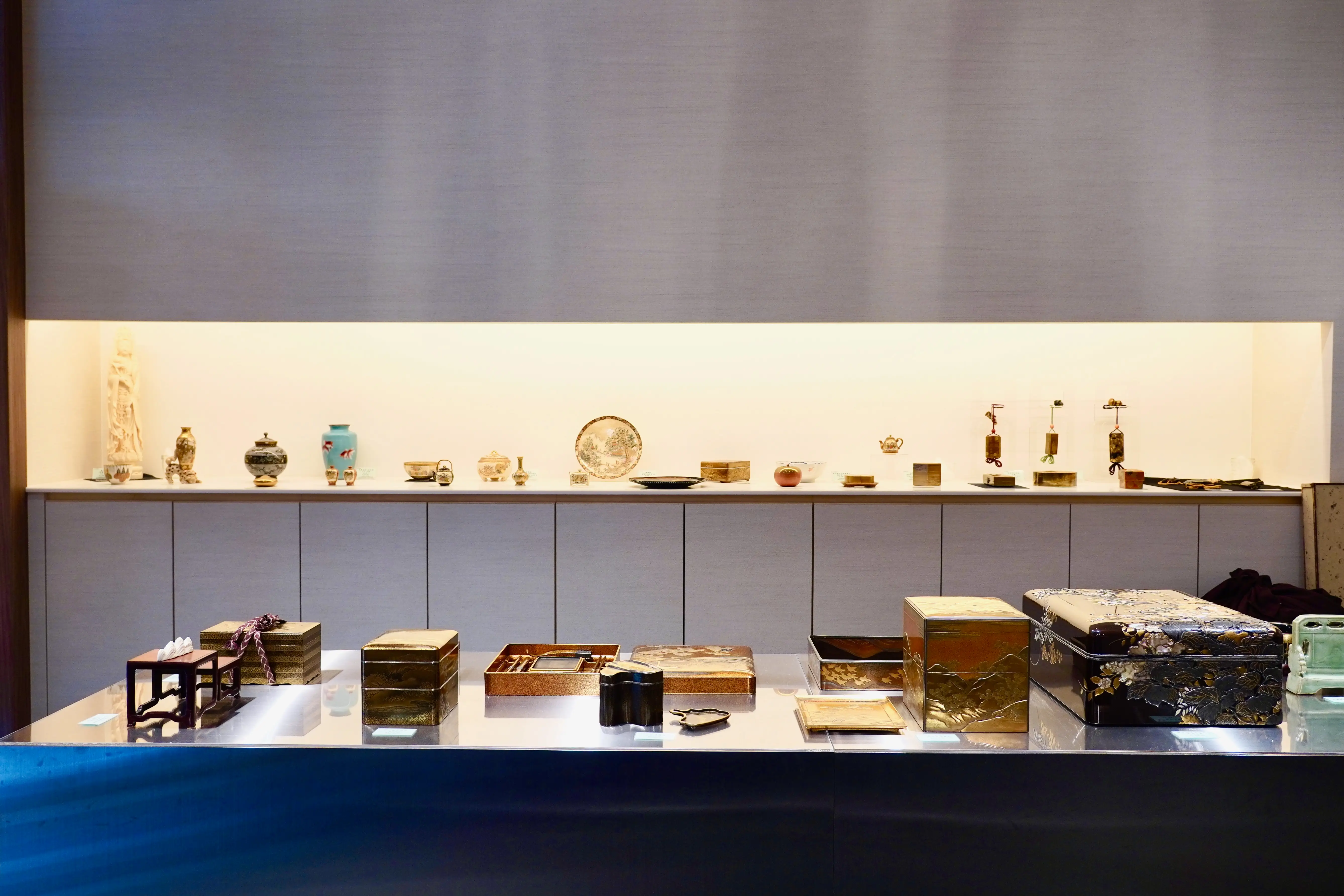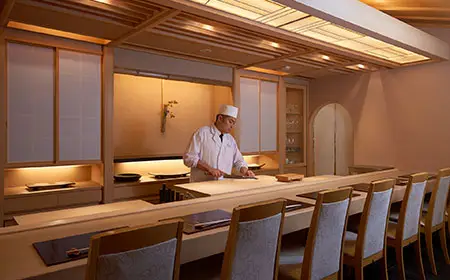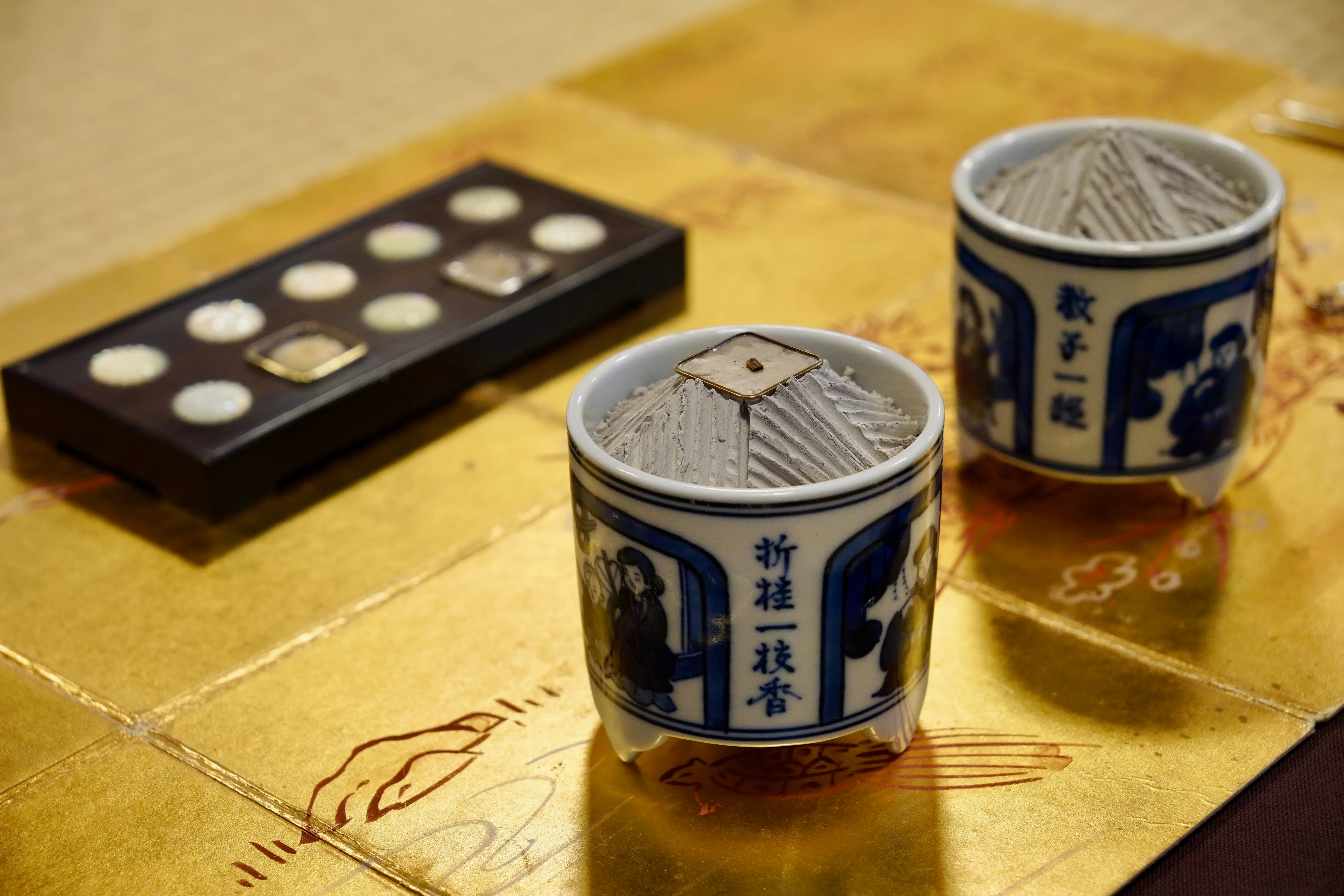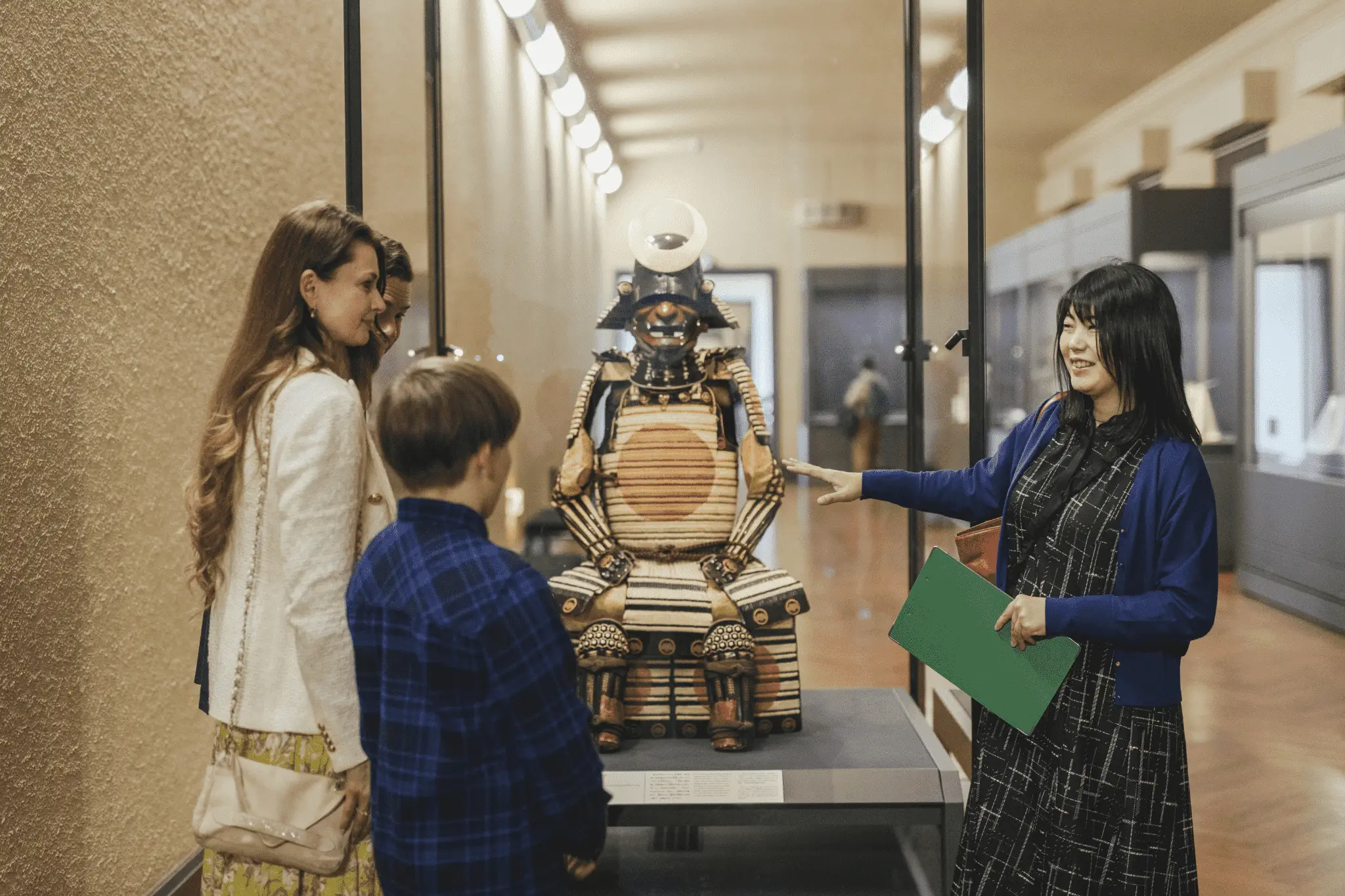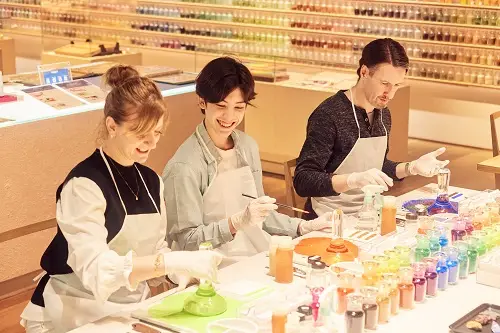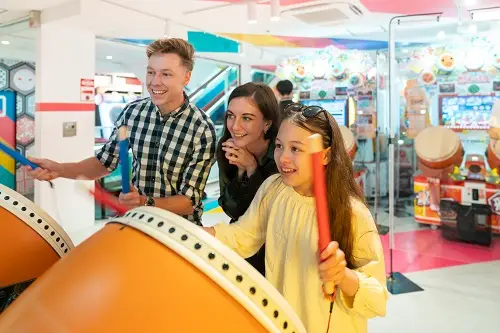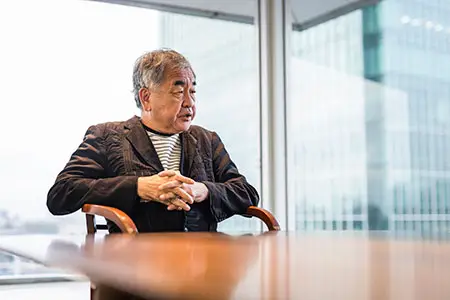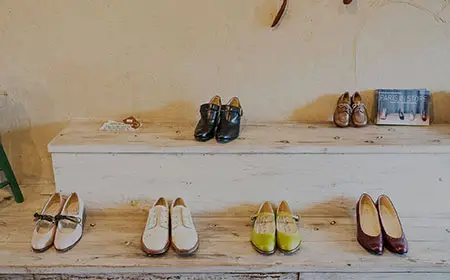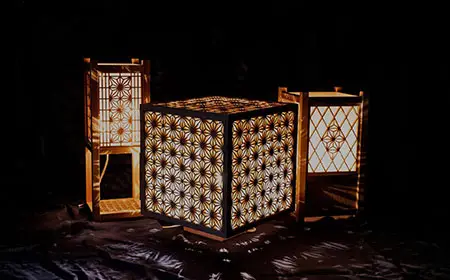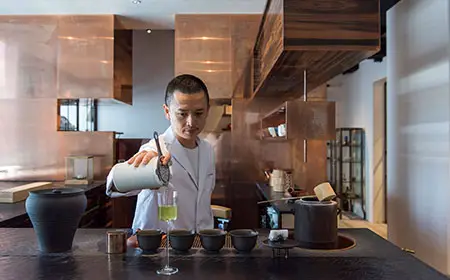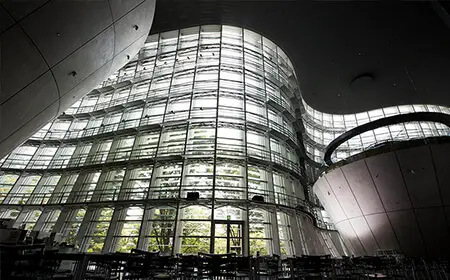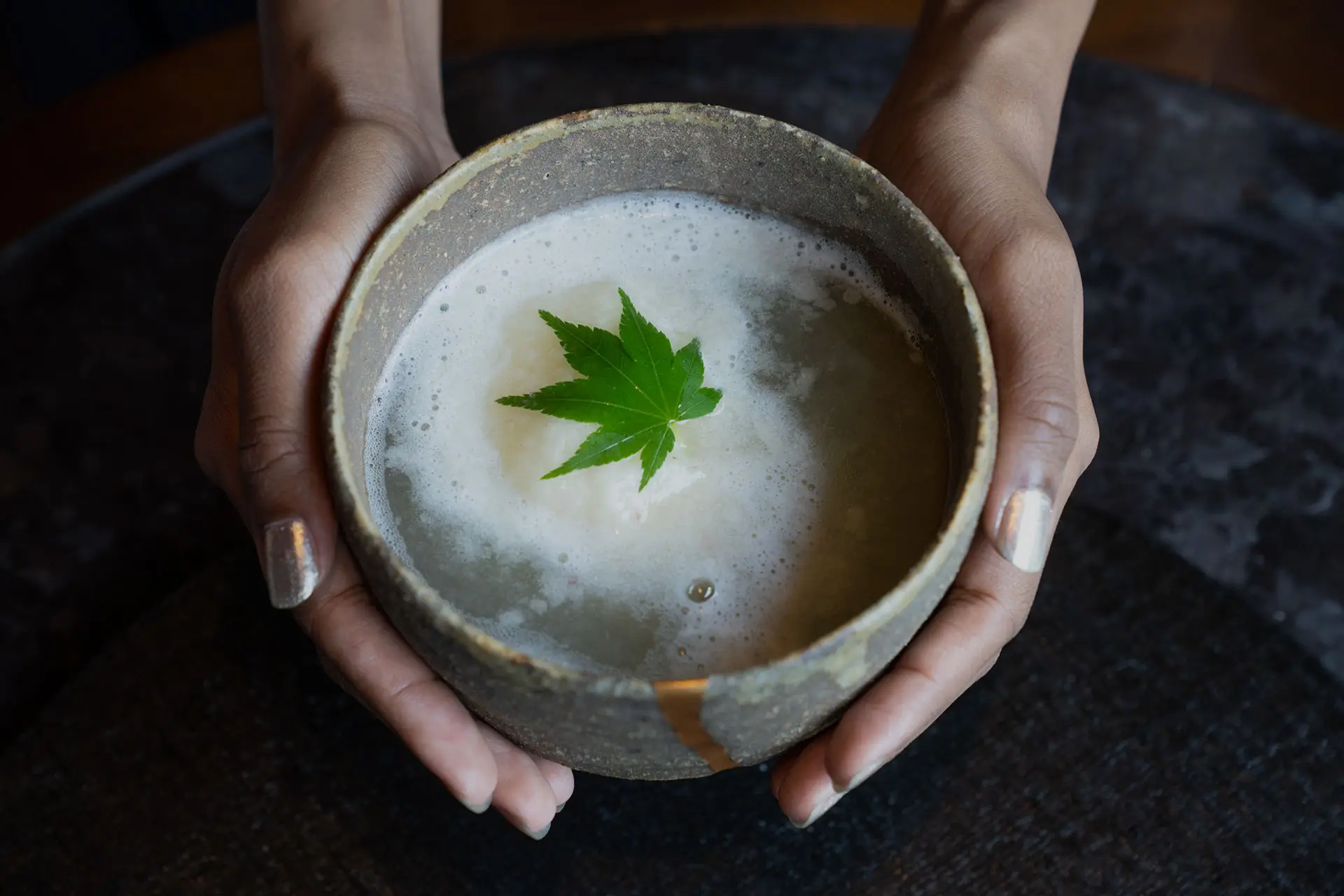
A MODERN TASTE OF KINTSUGI
From a rare encounter with a legendary kintsugi artist to an exquisite tea ceremony-inspired cocktail experience - slow down and explore the rich cultural landscape that lies beneath the surface of Tokyo’s fast-paced urbanism.
The ceramic cup would not look out of place in a Japanese tea ceremony, with its natural glaze, soft curves and sunlight-catching gold lines. However, there is not a drop of green tea in sight: instead, the cup is filled with a cool splash of craft gin and fresh summer peach - before the one-of-a-kind creation is ceremoniously offered to guests.
Welcome to a luxuriously modern take on traditional Japanese culture - in Tokyo. It’s not every day that a visitor can spend time with an artist specialising in kintsugi - the timeless art of repairing broken ceramics using traces of precious metals such as gold - before sipping carefully paired seasonal cocktails from his vessels at a high-end bar.
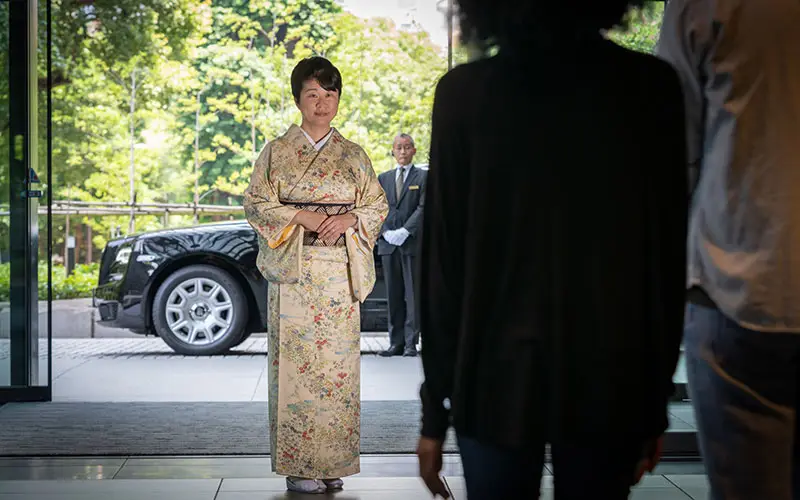
Tokyo has long seduced and surprised in equal measure, with its cloud-brushing skyscrapers, futuristic technolgy and trend-setting lifestyle scene. Yet the most rewarding Tokyo experiences are perhaps those offering an authentic flavor of its rich cultural heritage - with a modern twist.
A master of such experiences is the luxury travel consultancy Oharajuku, which helps culturally curious travelers delve beneath the frenetic surface of Tokyo’s daily life, from the world of gastronomy to contemporary arts.
Not to forget kintsugi. The company offers a unique bespoke experience focusing on all things kintsugi, the ritual of repairing ceramics in a way that celebrates the beauty of imperfection, with cracks poetically highlighted in precious metals. It’s a practice fast growing in popularity outside Japan, tapping into a global appetite for sustainability in daily life.
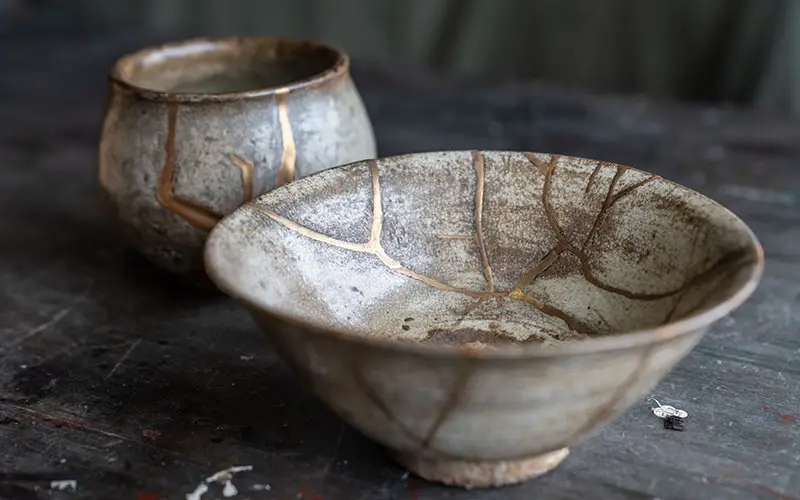
The main protagonist is Showzi Tsukamoto, an acclaimed kintsugi artist, who opens his Tokyo workshop to guests for an intimate hands-on experience. Charismatic and informative, Tsukamoto highlights how the roots of kintsugi are not confined to traditional Kyoto. Instead, he reveals the practice also flourished in centuries-old Tokyo, then known as Edo, once a hub for artisans specialising in makie - a traditional technique used to decorate the surface of lacquerware, and widely regarded as the foundation of kintsugi - with the capital still enjoying a reputation for avant-garde kintsugi today.
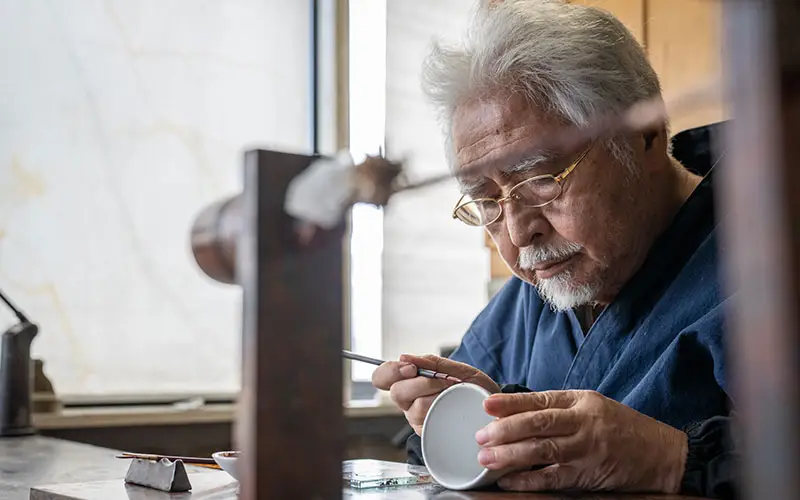
And then the fun begins. Sunlight filtering through the window, guests sit at a large wooden table, where Tsukamoto, in traditional navy Japanese-style work clothing, guides them through the process of making a kintsugi cup - from the application of traditionally-prepared lacquerware to the cup; fixing the broken part in place; and filing down the surface until it is mirror smooth; to, the icing on the kintsugi cake, carefully sprinkling gold powder onto lacquer-dabbed cracks.
As is often the case with the wisest of masters, Tsukamato’s insights are not confined to the technical. As he moves slowly through the creative process, he shares glimpses of the multi-layered depths of the art of kintsugi. From the widespread modern obsession with seeking perfection in all aspects of life to the relentless pace of many daily schedules, he gently shines a light on the deeply restorative - and timeless - role that kintsugi can play in the contemporary world.

“Kintsugi never hides its scars,” says Tsukamoto. “Every piece has an original and unique beauty. But it also has a deep connection to the heart. kintsugi is a very healing practice for anyone who is busy in the modern world.”
Tsukamoto’s words of wisdom still fresh in their minds, guests then head to the elegant confines of the bar at the Capitol Hotel Tokyu. Here, accompanied by Oharajuku’s expert escorts dressed in kimono, guests can enjoy tasting quality cocktails (picture sparkling sake and Kyoto gin plus herbs and fruits). Best of all? The drinks are served in artfully matched vessels, including Tsukamoto’s kintsugi creations plus other rare ceramics from the company’s collection.
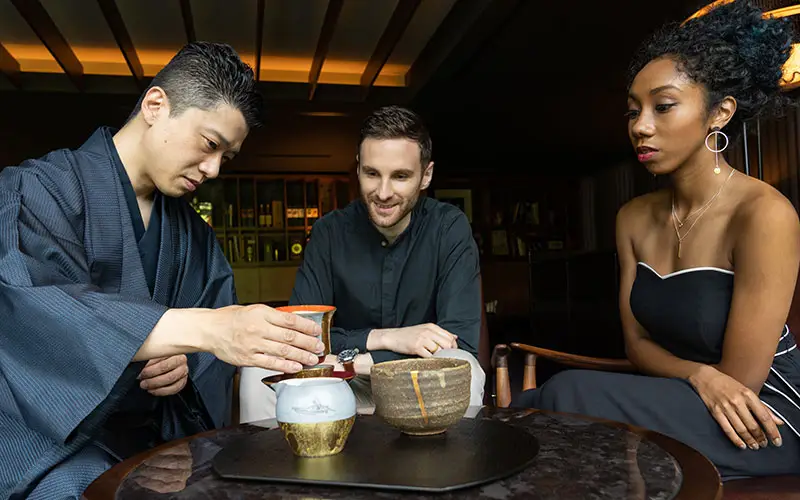
Tapping into Japan’s famed mastery of omotenashi hospitality, the escorts share their rich cultural knowledge, from insights into the ceramic cups used to serve the drinks to the heritage of drinking games that were traditionally seen in tea rooms.

Kunihisa Ohara, CEO of Oharajuku, explains: “We reinterpret tea ceremony and transport it to an urban context, serving cocktails in kintsugi cups instead of green tea, surrounded by Tokyo’s landscape, rather than a traditional Japanese garden. ”
It’s the perfect taster of Tokyo’s multi-layered facets - and a rich cultural experience likely to linger in the memories’ of guests long after they take their final sip.
Oharajuku






